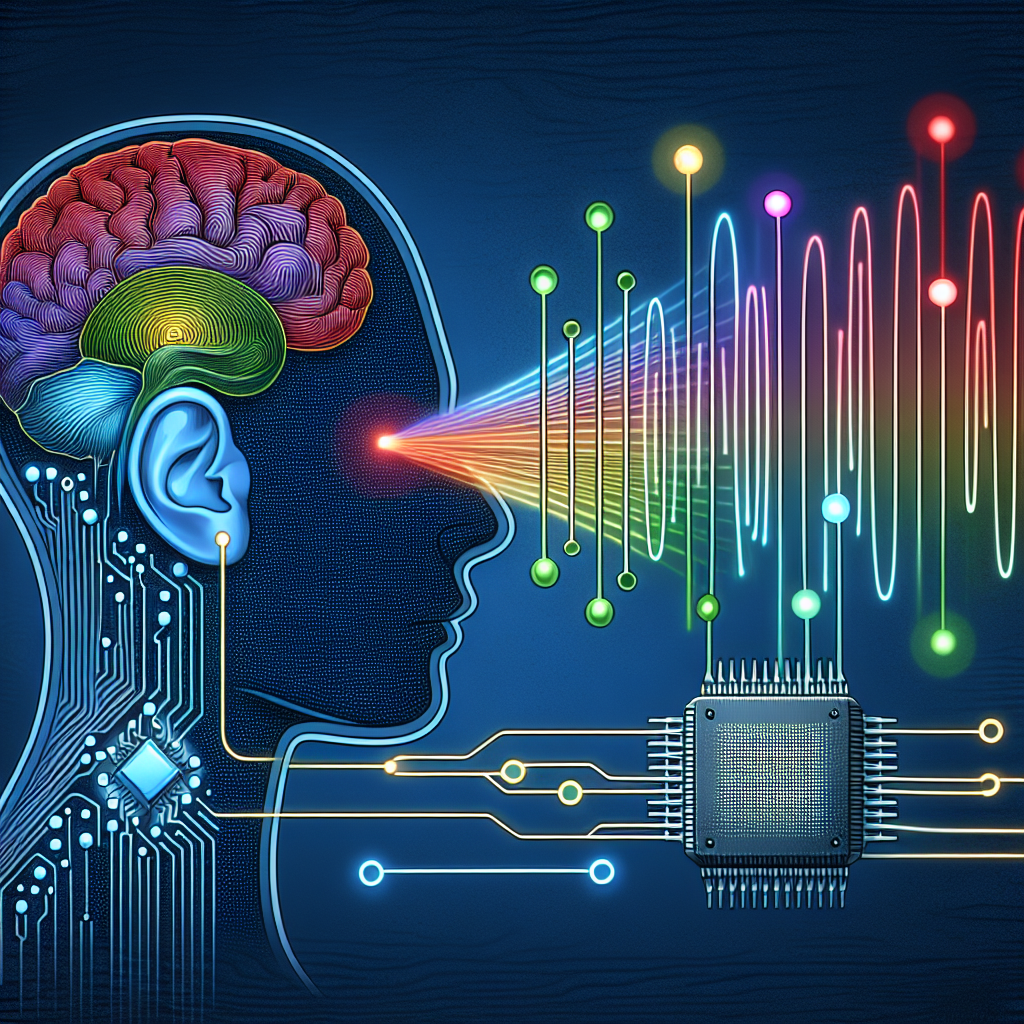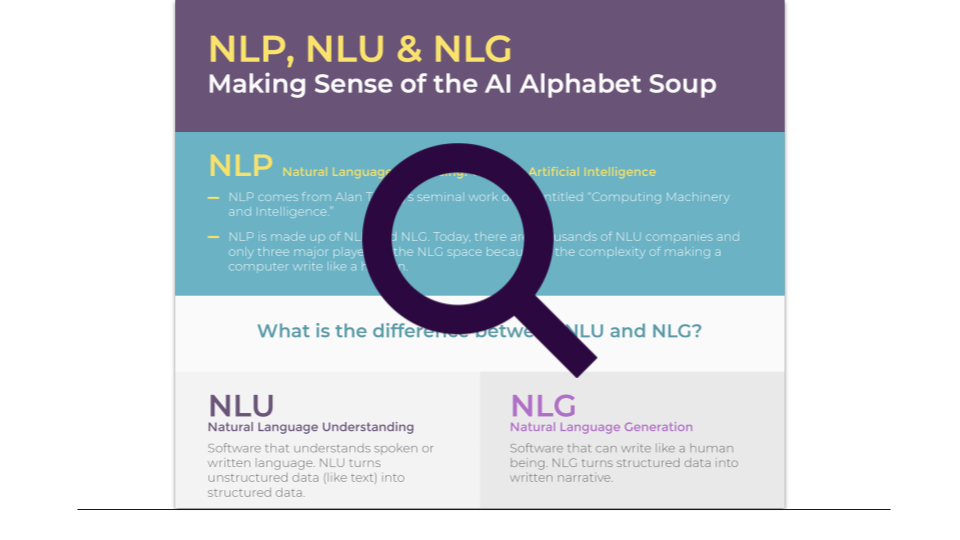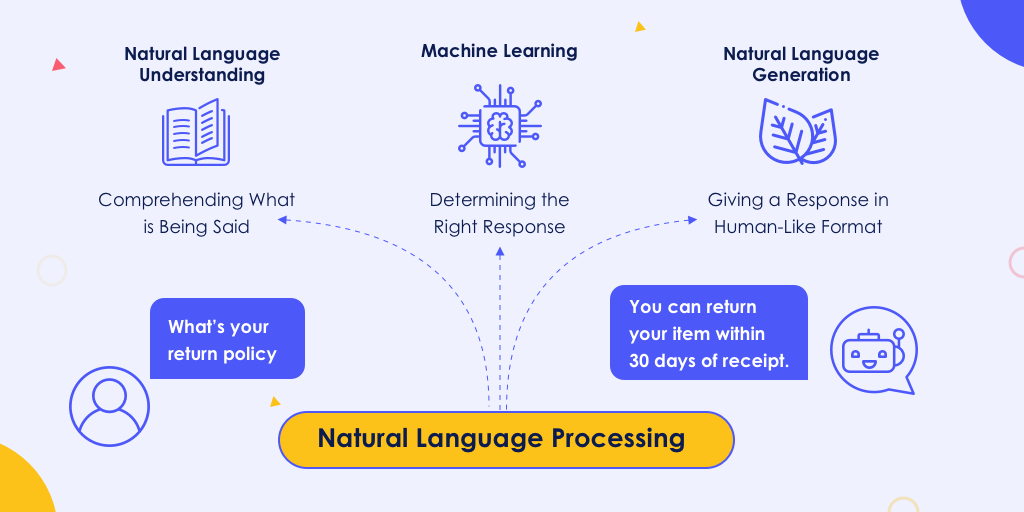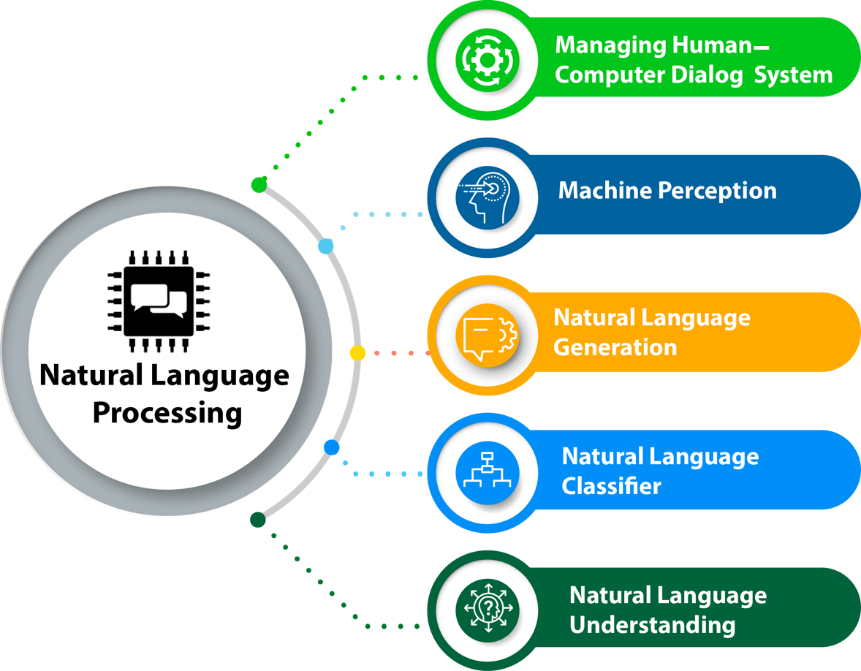Unlock the secrets of natural language understanding and discover how machines are learning to interpret human speech with precision.

Image courtesy of via DALL-E 3
Table of Contents
Have you ever wondered how computers can understand the words we speak or type? Well, that’s where Natural Language Understanding (NLU) comes in! NLU is like a superpower that helps computers make sense of human language.
What Does NLU Stand For?
First off, Natural Language Understanding is often shortened to NLU. It’s a fancy way of saying that computers can understand and interpret the meaning behind the words we use.
Why Is NLU Important?
Imagine sending a message to a friend through a chat app or asking a question to a voice assistant like Siri. NLU plays a vital role in helping computers understand what we mean and respond appropriately. It’s like teaching our gadgets to talk back to us in a language we understand!
What is Natural Language Understanding?
Natural Language Understanding (NLU) is how computers learn to understand human language. Imagine you are talking to a computer, and it can understand the words you say just like a friend would. That’s what NLU is all about!
Simple Definition
Natural Language Understanding is when computers learn to understand the words that people use when they talk or write. It’s like teaching a computer to speak human language.
How NLU Works
Computers use special programs to learn the meaning behind human words. These programs help the computer figure out what you are trying to say. So, when you ask a question or tell a computer to do something, NLU helps it understand and respond correctly.
How Do Computers Use NLU?
Computers have become incredibly smart over the years, and one of the ways they show this intelligence is through Natural Language Understanding (NLU). Let’s explore how computers use NLU to interact with us in various ways.
Voice Assistants
Have you ever talked to Siri or Alexa on your phone or smart speaker? These are voice assistants that use NLU to understand what you’re asking them to do. When you say, “What’s the weather like today?” Siri or Alexa can analyze your words, figure out the meaning behind them, and give you the weather forecast. It’s like having a conversation with a robot friend!
Chatbots
Chatbots are programs designed to chat with you like a real person. When you visit a website and a chat window pops up asking if you need help, that’s a chatbot using NLU. It can understand your questions and provide answers or help you with whatever you need. So next time you’re chatting with a friendly bot online, remember it’s using NLU to communicate with you!
Examples of NLU in Daily Life
Have you ever wondered how your smartphone knows what you’re going to type next? That’s thanks to Natural Language Understanding (NLU). When you start typing a message, your phone predicts the next word based on what you’ve already typed and suggests it to you. It’s like having a helpful friend who can finish your sentences for you!

Image courtesy of yseop.com via Google Images
Smartphones also use NLU for voice commands. When you ask Siri or Google Assistant a question, they understand your words and provide you with answers or information. So, the next time you ask your phone a question, remember that NLU is at work behind the scenes.
Search Engines
Imagine you’re searching for information about your favorite animal on Google. As soon as you start typing, Google’s search engine uses NLU to understand what you’re looking for. It analyzes the words you type and predicts the most relevant results for you to see.
Search engines like Google have gotten really good at understanding all kinds of search queries because of NLU. So, the next time you search for something online, remember that NLU helps make your search experience quick and easy.
Challenges of NLU
When it comes to Natural Language Understanding (NLU), computers face certain challenges that make it difficult for them to fully grasp human language. Let’s explore some of the hurdles that computers encounter in understanding our words and meanings.
Word Ambiguity
One of the major challenges that computers encounter in NLU is dealing with ambiguous words. These are words that can have multiple meanings depending on the context in which they are used. For example, the word “bank” can mean a financial institution or the side of a river. This ambiguity often confuses computers, making it tricky for them to accurately interpret language.
Context Understanding
Another significant challenge in NLU is understanding the context of a conversation. Humans rely on context to interpret the meaning of words and phrases. However, computers struggle to grasp the subtle nuances and cues that help us understand each other. For instance, a word like “cool” can have different meanings based on the situation in which it is used. This makes it challenging for computers to accurately comprehend and respond to human language.
How NLU is Getting Better
Machine learning plays a crucial role in making Natural Language Understanding (NLU) more accurate and efficient. Imagine a computer that can learn from the data it receives and improve its understanding of human language over time. That’s exactly what machine learning does for NLU. By analyzing vast amounts of language data, computers can identify patterns and trends, allowing them to interpret human words more accurately.

Image courtesy of bluewhaleapps.com via Google Images
AI Improvements
Artificial intelligence (AI) advancements have propelled NLU to new heights. AI allows computers to simulate human intelligence, enabling them to understand and respond to language in a more human-like manner. With AI, computers can process information faster, adapt to changes in language usage, and even generate responses that are indistinguishable from those of a human. These improvements in AI are making NLU better than ever before.
Fun Facts About NLU
Are you ready for some fun facts about Natural Language Understanding (NLU)? Let’s dive into some cool and interesting tidbits that will make you look at NLU in a whole new way!
Did You Know?
1. NLU is like a super-smart detective that decodes the mysteries of human language for computers. It helps them understand what we’re saying, even when we use slang or emojis!
2. NLU doesn’t just work with English – it can understand multiple languages like Spanish, Chinese, or even Klingon (yes, the language from Star Trek)! How cool is that?
3. Have you ever talked to a chatbot and felt like you were chatting with a real person? That’s because NLU gives chatbots the power to have conversations that sound natural and human-like.
4. Thanks to NLU, your smartphone can predict what you’re going to type next, making texting a breeze. It’s like having a mind-reading device in the palm of your hand!
5. NLU is constantly evolving and getting smarter with the help of artificial intelligence. Just like how you learn new things every day, NLU is always learning and improving to understand us better.
Stay tuned for more fun facts about NLU and watch how this amazing technology continues to shape the way we interact with computers and gadgets!
Conclusion
In this article, we have explored the fascinating world of Natural Language Understanding (NLU) and how it plays a crucial role in helping computers comprehend and interact with human language.

Image courtesy of www.xoriant.com via Google Images
Recap
To recap, NLU stands for Natural Language Understanding, which enables computers to understand the meaning behind human words. It is essential because it allows computers to interpret our language and communicate with us effectively.
Throughout the article, we discussed how NLU works, how computers use this technology in various applications like voice assistants and chatbots, and real-life examples of NLU in smartphones and search engines. We also delved into the challenges that computers face with NLU, such as word ambiguity and context understanding.
Moreover, we explored how advancements in technology, machine learning, and artificial intelligence are continuously improving NLU accuracy and efficiency. These improvements contribute to making NLU more effective and reliable in understanding human language.
By understanding the fundamentals of NLU, we gain insight into the complex yet exciting field of artificial intelligence and how it impacts our daily lives in ways we may not even realize.
Want to turn these SEO insights into real results? Seorocket is an all-in-one AI SEO solution that uses the power of AI to analyze your competition and craft high-ranking content.
Seorocket offers a suite of powerful tools, including a Keyword Researcher to find the most profitable keywords, an AI Writer to generate unique and Google-friendly content, and an Automatic Publisher to schedule and publish your content directly to your website. Plus, you’ll get real-time performance tracking so you can see exactly what’s working and make adjustments as needed.
Stop just reading about SEO – take action with Seorocket and skyrocket your search rankings today. Sign up for a free trial and see the difference Seorocket can make for your website!
Frequently Asked Questions (FAQs)
Common Questions
Here are some common questions that people often ask about Natural Language Understanding:
Q: What is Natural Language Understanding (NLU)?
A: NLU is a branch of artificial intelligence that focuses on enabling computers to comprehend, interpret, and respond to human language in a way that is meaningful to humans.
Q: How does NLU work?
A: NLU works by using algorithms and machine learning to analyze the structure and semantics of human language. It involves breaking down sentences, understanding the meaning of words and phrases, and considering the context in which they are used.
Q: Why is NLU important?
A: NLU is crucial because it allows computers to process and understand human language, which is essential for functions like voice assistants, chatbots, and search engines. It enables more natural and effective interactions between humans and machines.
Q: What are some examples of NLU in daily life?
A: You encounter NLU in daily life when you use voice commands on your smartphone, ask questions to a voice assistant like Siri, search for information on Google, or interact with chatbots on websites.
Q: What are the challenges of NLU?
A: Some challenges of NLU include understanding ambiguous language, dealing with different contexts, and interpreting the nuances of human communication. Computers struggle with word meanings that can change based on the context in which they are used.
Q: How is NLU getting better?
A: Advances in technology, machine learning, and artificial intelligence are improving NLU by enabling computers to learn from data, adapt to new situations, and make more accurate interpretations of human language over time.
Q: Are there any fun facts about NLU?
A: Yes! One interesting fact about NLU is that researchers are continuously exploring ways to enhance its capabilities, making it more efficient and accurate in understanding and responding to human language.







